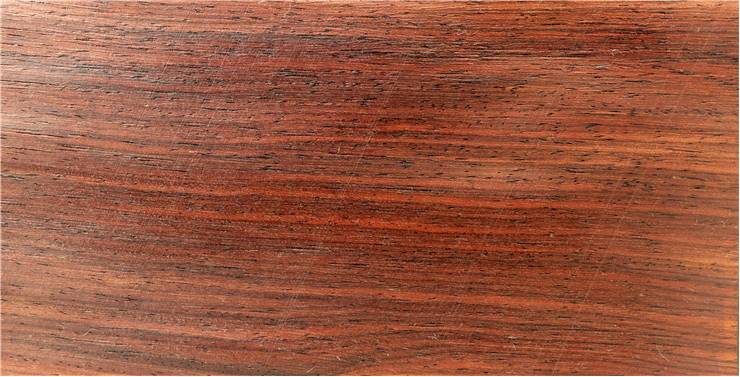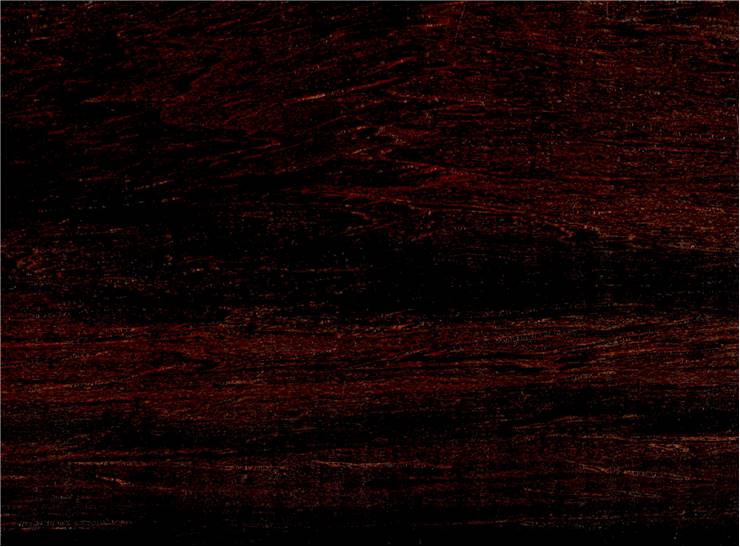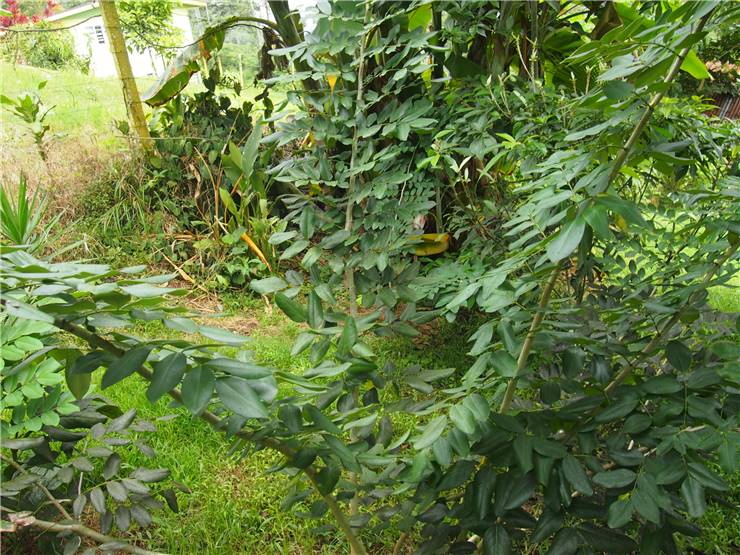Cocobolo - Definition, Characteristics and Uses of Cocobolo
Among all exotic hardwoods currently being sold worldwide, Cocobolo has become known as one of the most beautiful and highly valued types of lumber. Its native qualities have managed to captivate the attention of woodworkers and artisans who have infused this magnificent rosewood into countless forms. This genuine rosewood lumber is known worldwide for its exquisite look, natural oils that give it a distinct floral odor, and excellent workability that makes it suitable for many applications. Immediately after cutting, Cocobolo showcases a rich color scheme with incredibly appealing swirling and dancing patterns of dark multicolored lines. The entire surface eventually darkens over time into a rich dark color that is pleasing to the eye.
Originally found growing in Central America (especially countries between Mexico and Panama), the heavy demand for the tree Dalbergia retusa has ensured that this species of genus Dalbergia has spread all around the world, making it the species that contribute most of the wood in the trade of high-quality lumber. The high demand for this wood reached such a high point during the early 20th century that the hastened creation of the Panama Canal can partly contribute to the need to quickly transfer Cocobolo lumber from Central America to the rest of the world.
Even with the expansion of its presence worldwide, high demand for it has still pushed the IUCN organization to mark its conservation status to the “vulnerable” stage, meaning that more effort is needed to spread its growth. To ensure the uninterrupted survival of this highly valued tree species, the trade of Cocobolo is now tightly regulated by several governments worldwide.
What is Cocobolo
Cocobolo is the commonly used name of the famous Central American treeDalbergia retusa and is also known under the namesMexican Rosewood and Central American Rosewood. With an average-sized trunk and size, this tree quickly distinguished itself as one of the best lumbers for constructing and creating a wide variety of wooden objects of medium to high value.
Interestingly, its internal wood structure can come in a wide array of colors, ranging from black, brown, and purple to brighter hues such as red, orange, and even yellow. It’s sapwood that contains many valuable oils that give Cocobolo a unique smell, and the aroma is usually pale yellow. As with many other types of wood, Cocobolo also darkens with age.
One of the exciting characteristics of the Cocobolo is its tendency to grows in a crooked way, with many imperfections in its trunk. But in an exciting twist, lumber with a lot of imperfections is praised more than those with highly regular color patterns of veins. In its most popular variety, the heartwood of Cocobolo has anattractive black and brown color with secondary spots of oranges, reds, purples, and yellows. The type of sawing and even distance of the lumber from the core of the trunk can impact the look of the Cocobolo wood, and on top of that, the angle at which light bounces from the wood gives a final variation on its presentation. Its texture is fine, straight, with grains that are occasionally interlocked.
Cocobolo is also famous for its odor. Since it is very dense and oily, it can produce a distinctive aroma for several years, mainly if used for indoor flooring, paneling, and furniture. Like many other types of popular lumber, Cocobolo is also capable of aging with grace, with high resistance to scratching, general wear, rot, and insect attack.
Since it is heavy, dense, and easy on tools, Cocobolo became one of the most popular wood types for the creation of high-end objects, such as furniture, chess pieces, tool handles, canes and pool cues, sculptures and many forms of fine furniture such as handles, jewelry boxes, and others. Makers of musical instruments have quickly concluded that Cocobolo has excellent properties for bouncing and absorbing sound. Today, many musical instruments (especially stringed ones, such as guitars) are made from Cocobolo.
One of the rare disadvantages of the Cocobolo wood structure is that it can be fairly brittle, which demands woodworkers to drill holes before securing them with nails or other tools. Since the wood is also very hard, the tools used to cut them can also become dull quickly. After initial troubles of woodworking production, Cocobolo becomes adaptive when it reaches the final polishing and painting phase. It accepts lacquer quite well and can be polished to a high luster without any issues.
Origin
Cocobolo was originally found growing in Central America, most notably across the territory of Latin countries such as Mexico, Nicaragua, Costa Rica, Guatemala, and Panama. To achieve an age suitable for harvesting, a single Cocobolo tree has to grow for several years.
This tree is also known under the following names - Caviuna, Cocobolo Prieto, Funeram, Granadillo, Jacarandáholz, Nambar, ñamba, Nicaraguan Rosewood, Palisander, Palissandro, Palo Negro, Pau Preto, Rosewood, and Urauna.
Since the natural forests of Cocobolo have already been harvested, it is today grown on plantations across Latin America. It's harvesting usually requires a special government license.
Characteristics
- Tree Size - 45-60 ft (14-18 m) tall
- Trunk diameter - 1.5-2 ft (50-60 cm)
- Janka Hardness - 2,960 lbf (14,140 N)
- Average Dried Weight - 69 lbs/ft3 (1,095 kg/m3)
- Specific Gravity (Basic, 12% MC) - .89, 1.10
- Crushing Strength - 11,790 lbf/in2 (81.3 MPa)
- Modulus of Rupture - 22,910 lbf/in2 (158.0 MPa)
- Elastic Modulus - 2,712,000 lbf/in2 (18.70 GPa)
- Shrinkage: Radial - 2.7%, Tangential: 4.3%, Volumetric: 7.0%, T/R Ratio: 1.6
- Odor - Spice-like scent during woodworking phase
- Workability - Hard, but not as much as other famous lumber types.
- Texture - Very appealing and even texture.
- Grain - Straight to interlocked grain.
- Sustainability - Ranked on IUCN as Vulnerable due to high demand for commercial exploitation.
- Required growth density - No specific requirements.
- Drying - Easy, but long.
- Maintenance - Low.
- Cost - Relatively expensive, but not as high as some other exotic lumber types.
- Rot and insect resistance rating - Very high
Related Species
Cocobolo lumber is most commonly harvested from three related species of Dalbergia retusa.
Mexican Cocobolo - It produces swirling and dancing patterns of heavy lines of dark purple and black against a background of orange and red, or in some cases, even a reverse order!
Guatemalan Cocobolo - Similar to the Mexican variant, but with a bit lighter color tonnes, which is considered less appealing than rich dark Cocobolo.
Nicaraguan Cocobolo - Famous for its mix of red and black orange colors. Plantation-grown trees often exhibit less swirl in their rings, making them less appealing.
Uses
Cocobolo is a very famous type of lumber that has managed over the last several centuries to become an integral part of manufacturing many different types of wooden objects and structures. As one of the most prized lumbers available worldwide, Cocobolo's attractive figure and color have made it highly attractive to general woodworkers, artisans, and musical instrument makers.
Here are only some of the applications of the famous Cocobolo wood:
- General and fine furniture
- Hardwood flooring
- Hardwood paneling
- Musical instruments (including high-end and luxury types)
- Turnings
- Small specialty objects (chess pieces, high-end pencils, brush backs, knife handles, and others)
- Hand and drawer handles
- Jewel boxes
- Bowling Balls
- Carvings
- Sculptures
- And more
Benefits
Cocobolo is not known for any particular medicinal benefit. Still, since it is resistant to rot, insect attacks, and age effects, some medical facilities prefer to use it for their hardwood flooring and paneling.
Problems
Like many other types of hardwood from Central America, sawdust of Cocobolo lumber can cause irritation and allergic reactions. Most standard medical issues revolve around the skin, eye, and respiratory irritation. Also, pink-eye, asthma-like symptoms, and nausea can affect those who spend a lot of time surrounded by its fine dust.
In addition to health issues, raw Cocobolo wood is notoriously difficult during the gluing phase. Woodworkers have developed several different tactics for handling this wood during the production phase, but no one approach has been deemed as best.


